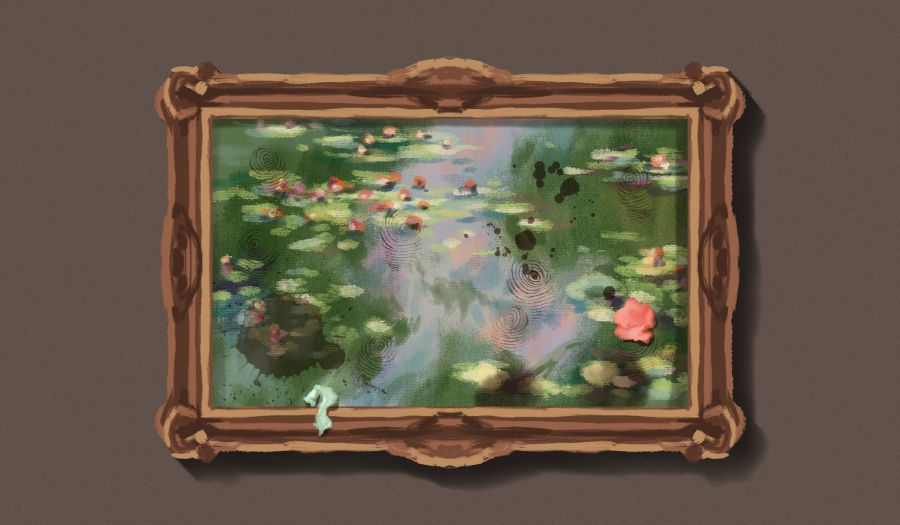In primary school, we are taught to honor the past, study it deeply, and learn from the successes and failures of those who came before us. Historical events aren’t just seen as happenings but moments worthy of examining and intellectually digesting on deeper levels. However, despite this admiration of bygone times, historical objects and relics of the past are not given nearly the same amount of respect. Instead, they have become objects to trade, buy, and sell at will with barely any regard to the history they hold and the past that they represent.
Museums work to provide a safe place for historical objects to be displayed and preserved under the proper care of professionally-trained individuals. However, not all historical objects have the privilege of being protected by museums. Auctions on a global scale offer wealthy collectors, private institutions, and individuals unaffiliated with museums or any professional establishments the opportunity to purchase these artifacts and claim them as their own. Exacerbating this issue is the creation of monetary valuation. The importance of a historical object is often communicated through its market-based value. Though, by putting a markedly-high price tag on these artifacts, these appraisals are also providing great motive for individuals to steal, barter, and trade these objects for their own personal gain – which is how the gray market came into existence.
The gray market of antiquities is a complicated mixture of legal and ethical transactions combined with unlawful acquisition of objects that may have been stolen and handled illegally in the past. While the market itself contains its own fair share of corruption, theft, and individuals who are driven by greed, the true issue lies with the concept of placing prices on these objects and selling them off to the highest bidder.
Many public institutions receive contributions that were obtained by individual collectors and parties from the gray market. It’s not uncommon for historical objects to be temporarily loaned to a public museum to display for the general public’s viewing, and these collectors are certainly doing the responsible thing by allowing the artifacts to be cared for in a professional and controlled environment. However, these items are still privately owned and unethically obtained. In addition, public museums don’t rightfully own these historic pieces; they are simply given permission to display them and that privilege can ultimately be revoked by the rightful “owner” who had the wealth and opportunity to purchase these objects.
Private franchises and institutions can also participate in these auctions and contribute to the passing around of these items. This is a significant issue in the United States where a large majority of the estimated 35,000 national museums are privately owned and operated. These institutes house the personal collections of one or more individuals, and they are not necessarily authorized by Congress or operated under the U.S. Government. Public museums are under government jurisdiction and have to follow legal and ethical standards that private museums may not necessarily feel the need to consistently follow.
The private franchise Ripley’s Believe It or Not! recently took advantage of its ownership of one of Marilyn Monroe’s infamous gowns and loaned it to celebrity figure Kim Kardashian without an approval from an outside source. This unchecked loan gave Kardashian the inappropriate privilege of wearing the gown for her red carpet appearance at the Met Gala. This particular incident stands as a prominent example of how these privately-owned items can be put in vulnerable and potentially harmful situations under the holding of those who might not necessarily respect its conservation. In situations like these, historians and international heritage organizations are limited in their ability to protect these items. They can only watch from the sidelines and provide strong suggestions that advise those with private ownership to respect the objects in their care.
Gray market auctions also allow historical items to be traded and transported miles away from their country of origin as opposed to being correctly protected in a public institution funded and ethically regulated by an established government. For example, the president of Hobby Lobby, Steve Green, opened his own private museum called the Museum of the Bible after he accumulated 40,000 stolen artifacts from Iraq. Eventually, loose regulations were tightened and enforced, resulting in the objects in Green’s collection being returned to their country of origin. This enforcement of laws is certainly a positive sign and a productive step in the right direction, and some auction houses have created new ways to prove the ethicality and authenticity of artifacts before allowing them to be sold. However, these measures wouldn’t be needed as intensely if purchases and prices weren’t prioritized over preservation.
Artifacts shouldn’t be given a price tag. These objects belong in public institutions that have the resources and the motivation to truly appreciate them for the history they represent. If private ownership of historical items were to be eliminated, the goal to preserve history in a respectful manner could easily be reached. But, until society can outgrow the mindset of consumerism and acknowledge that some items don’t rightfully belong in private collections, these items will continue to find themselves in the hands of those who can afford them, dispersed across the globe.
Art by Angela Liang for The UCSD Guardian.














